- How to Cite
- Language & Lit
- Rhyme & Rhythm
- The Rewrite
- Search Glass

How to Describe a Storm in Writing
Whether they're ruthless tornadoes or torrential hurricanes, storms can add atmosphere and conflict to a personal narrative or story. The use of vivid description is a crucial tool for bringing these weather phenomena to life on paper and moving your plot forward. Using figurative language and active verbs can help you place readers right in the middle of the rain, wind and thunder.
Mighty Metaphors and Storm Similes
A simile is a type of description that makes an explicit comparison between two things using the words "like" or "as." A metaphor, by contrast, is a direct comparison that does not use these words. You can use these devices to create surprising descriptions of your storm. If you're describing a hailstorm, for example, you might use a simile to write, "The hailstones clattered to the ground like marbles spilled from a box." To use a metaphor, you might write, "An avalanche of hailstones fell from the sky."
The Sound of Storms
In real life, the sounds of nature are often key indicators of approaching storms. You can bring these sound effects to your descriptions by using onomatopoeia, a device where words mimic the sounds of their meaning. For example, if a thunderstorm figures prominently in your story, the thunder could "rumble" or "boom," rain could "patter" against the windows" and wind could "rush" across a field. Try making a list of all the sounds the storm in your narrative might involve and brainstorm onomatopoeic words to describe them.
The Character of Storms
If a storm is central to your story's conflict, you might consider having the weather literally take on a life of its own. Personification occurs when a writer gives human characteristics, such as actions and emotions, to an inanimate object. If your characters are trapped in open water during a hurricane, you might write, "The angry waves smacked against the side of the boat." Although water can't feel anger, the description of the waves as "angry" adds emotional texture and characterization to the storm.
Vivid Verbs
Because bad weather can often get out of control, describing a storm is not the time to skimp on verb usage. Weak verbs, such as "was" or "were," drain your descriptions of energy rather than infuse them with detail. Using specific, active verbs for the storm's motion gives readers a more detailed image of the story's events. For example, the sentence, "The dark sky was lit up by lightning," is a good start, but revising it to include an active verb can make the description even more forceful: "Lightning flashed across the sky."
- Western Michigan University: Basics of Metaphor and Simile
- Read Write Think: Onomatopoeia
- Universal Design for Learning: Literary Devices: Personification
- Writing Commons: Avoid Unnecessary "To Be" Verbs"
Kori Morgan holds a Bachelor of Arts in professional writing and a Master of Fine Arts in creative writing and has been crafting online and print educational materials since 2006. She taught creative writing and composition at West Virginia University and the University of Akron and her fiction, poetry and essays have appeared in numerous literary journals.

- Writing About
- Tips For Writers
March 04, 2014
Writing about: a hurricane.
| This picture was inspired by a scene in Hurricane Crimes . . . cards and jelly beans. :) |

6 comments:

Great tips, Chrys!

Thank you, Kelly!

One more day until release! Those are all things to consider. I've been through several hurricanes and nothing makes you feel so unprepared as the first one.
Yes, one more day! :D You can think you're prepared before one hits, but once your in the middle of it you realize how much more you should have prepared.
I'd hate to have to deal with a hurricane - thankfully, I've never had to, here in England. I'd like one to be called 'Fanny' after me, though!
A hurricane hasn't hit Florida for several years so I'm very thankful about that. Tropical Storm Fanny has a nice ring to it. ;)
New comments are not allowed.

20 of the Best Words to Describe a Storm in Writing
By: Author Hiuyan Lam
Posted on Last updated: October 20, 2023
Categories Vocabulary Boosters
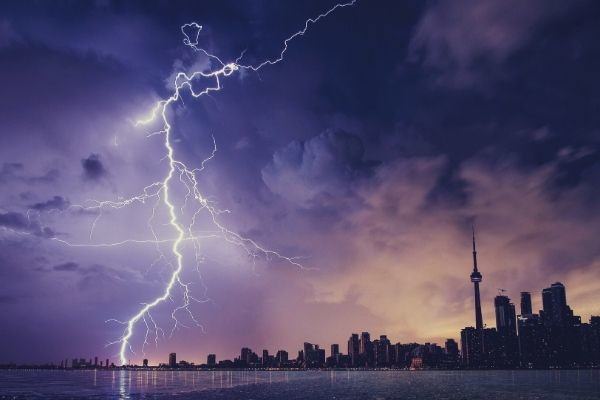
What’s great when searching for words to describe a storm, whether for a storm you are looking to write about in your novel or something else, is that there are endless possibilities.
Words to describe how a storm is can vary as there are different aspects you could focus on, and storms can occur in different places.
Here are some words to describe two different aspects of a storm and where one can take place.
The best words to describe a storm with lightning
Finding the right words to describe a storm with lightning is particularly hard as some people are afraid of it, whereas others think that it’s awesome, or both. Here are some words to describe a storm with lightning:
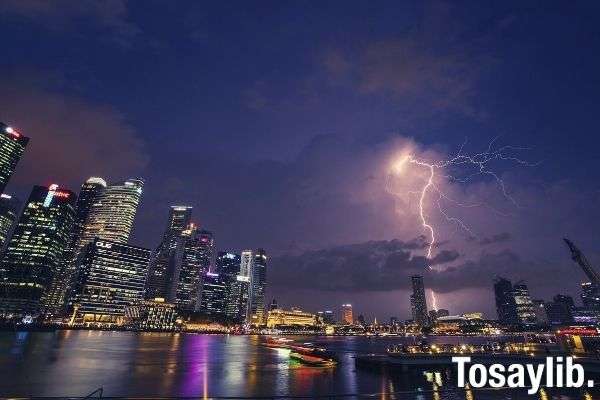
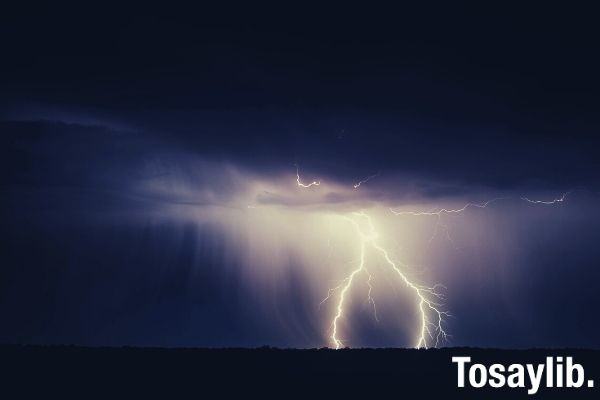
You May Also Like:
25 of the Best Words and Phrases to Describe Rain

Top words for describing the sound of thunder
When looking for words to describe a storm, don’t forget to consider those that describe the most distinct sound you will hear during one: thunder. There are many words to describe a storm with thunder and we have compiled the best of them below.
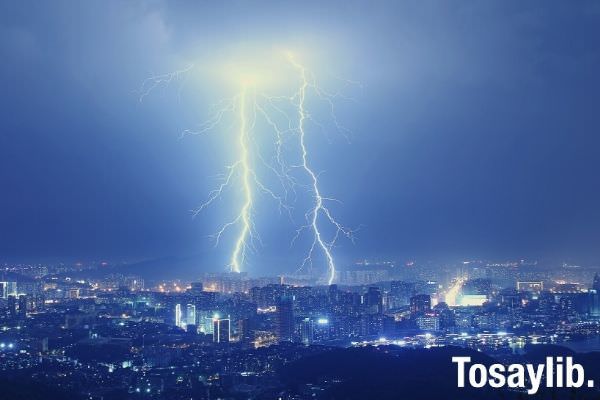
25 Perfect Words to Help Describe Your Pain and Suffering
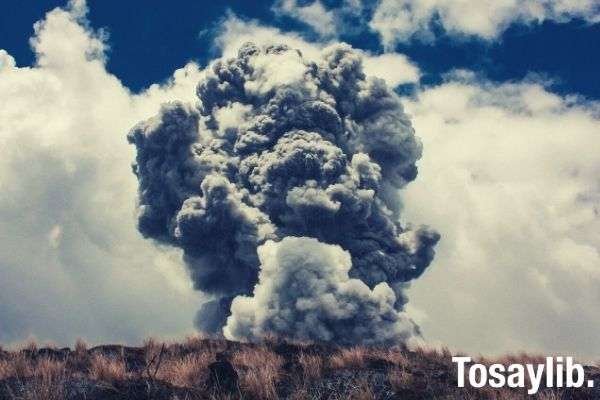
The best words to describe a storm at sea
Sailors have seen their fair share of bad weather, so you need to think and feel as they would when using words to describe a storm. To get the best words to describe a storm at sea when you haven’t witnessed one, try to imagine what feelings sailors of old and modern times would share.
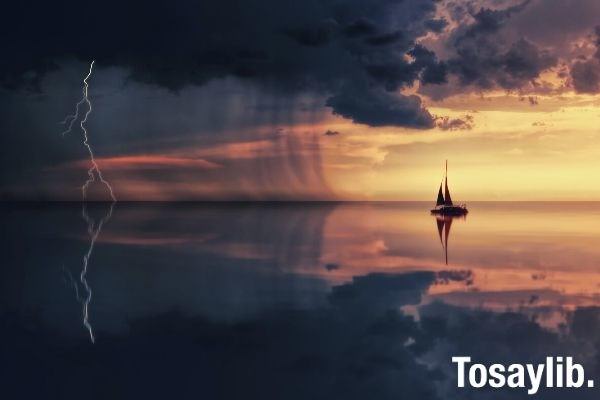
25 of the Best Words to Describe Heat and Hot Weather
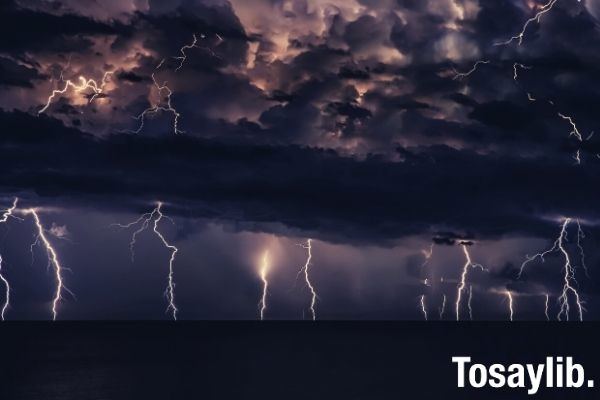
Storms are one of the most amazing weather occurrences when you consider how they have the power to build and destroy all in one watery bundle. We hope that you’ve found a few words to describe a storm that can accurately express how you felt during one.
Search for creative inspiration
19,898 quotes, descriptions and writing prompts, 4,964 themes
storms - quotes and descriptions to inspire creative writing
- a hurricane
- heavy downpour
- Power outage
- sinking ship
- storm at sea
- storm clouds
- storm debris
- storm in the city
- Thunderstorm
- winter storm
The storms took Earth into an onward night, regardless of neither time nor sun, yet came the booming exclamations of heaven and lightning to restart her heart.
The storm came with a sepia hint to the silver-black sky, as if it already knew the winds and rain it wrought would echo for eternity.
Lightning cracked the sky sending heaven's light through the storms.
The storms grew vast, surging as the spring melt river, the air in tight eddies, its playful vortices unaware of their own strength.
The storm was a twirl of perfect black ballet dancers, each dressed in windswept grey. They danced to the roar of heaven's drum. They called lightning to their stage. For they were honour bound to come when the compass needed the music of the wind to send its needle full round.
As with storms in nature, where the eye is a place of stillness, when you can see your own storms in good perspective, you will find yourself safe and better able to navigate.
The storms separates the hiders from the heroes and villains, washing the stage clean for the last battle.
In these storms I cannot fight the wind, nor keep the rain from filling rivers fast, yet I can move one and all to higher ground. I can keep as many safe as I can.
She took to the storms as the wind were rocket fuel and the rain her beloved companion. For some are born to shelter, or to shelter others, she was born to tame what others never could.
The storm came as the opera of the skies, the instruments determined to sing out, the trees and grasses as their percussion. Even the rain came in orchestrated rhythm, appearing the as the master of the scene yet arriving on unheard cue. From within our home it gave a surging rise to our hearts, calling out that childish sense of adventurous joy.
The lightning and the sun upon the cloud tops was the only brightness that day. The wind ran as if it has been restrained for time out of mind and it was determined to outrun any chaser. The sound of it was a strange song, as if howling yearned for a melody, and we watched the trees join in the unfolding scene, as if the change, though abrupt and startling, was as welcome as a surprise knock on the door.
Sign in or sign up for Descriptionar i
Sign up for descriptionar i, recover your descriptionar i password.
Keep track of your favorite writers on Descriptionari
We won't spam your account. Set your permissions during sign up or at any time afterward.

- Write Better Fiction
- Write Better Nonfiction
- Write Better Poetry
- Get Published
- Be Inspired
- WD Competitions
- Competitions
- Free Downloads

How to Write Disaster Stories Infused With Hope
- Author: Karol Hoeffner
Readers are drawn to stories about disaster, both real and imagined. When faced with a disaster in real life, our pulse quickens and our heart races. We are sometimes blessed with super-human strength, like the elderly woman who lifted up the back end of her sedan to free her grandson trapped underneath. We have moments of razor-sharp clarity that drive us to do whatever it takes to survive. In the world of story, every feeling and every action is intensified in the wake of a disaster. It's the foundation of drama itself.
( 6 Rules for Writing a Medical Thriller .)
A disaster ignites the narrative engine of the external storyline. Earthquakes, fires, and storms provide the writer with so many opportunities to test the thematic foundations of the story and the backbone of the characters. They are chock-full of the unexpected, danger, impossible challenges, and conflict. What would one person do in the wake of a hurricane as compared to another?
One author advised young writers to put your hero in a tree and then throw rocks at them. Disasters are equivalent to boulders, capable of crushing the very tree you had your hero climb.
Putting Your Heroes in Trees
Writing about disasters requires attention to detail and accuracy. You have to dig in and do the research. What happens when a sailboat gets caught in a typhoon? Or a tornado hits in the middle of the night? I don't believe writers must experience weather first-hand to write about it. But they do need to understand how the science works.
If you're writing about a documented disaster, go to the source. Interviewing those who lived through it or reading their accounts enriches the narrative, because of the specificity of the details. I traveled to New Orleans shortly after Katrina slammed the Crescent City and listened to the stories of the survivors. Many of the details of the hurricane and its aftermath were woven into the novel I later wrote.

Learn more about Knee Deep at www.regalhousepublishing.com/product/knee-deep .
One woman told me that when the flood water receded, it was followed by a deadly quiet. The ever-present birdsong of the city disappeared. She supposed that the birds had either escaped or died in the storm. But the silence left in their absence was heart-breaking. Her story made its way into mine.
I've also had to reverse-engineer research on occasion. Early in my screenwriting career, I wrote the television movie, Burning Rage , about a geologist who investigates a rash of coal fires breaking out in deserted, underground mines in Tennessee. Pressured by the network to complete a first draft of the screenplay quickly, I roughed out a plot based on imagination not science.
I then interviewed a geology professor from UCLA who was an expert in underground coal fires. He considered all the scenarios I envisioned and told me which ones were possible. Even more importantly he explained the conditions that would have to exist for a particular scenario to take place. He not only validated what I had only imagined, he provided the set-up to make it real.
Hope in Transformation
If the disaster itself provides exciting plot points for the external story engine, the message of hope resides in the interior world of the characters. Hope is centered in how your heroes react to the challenges, how the disaster marks them and how it opens them to change or transformation.
( Exploring Star Wars and the Hero's Journey .)
Some may say that books about disasters inherently give people hope because we identify with characters who survive. Experiencing their journey gives us a kind of faith in our own ability to make it through a crisis. But I think it goes much deeper than that.

The external story exists to test the protagonist's internal struggle and attitudes, which often manifests itself as failed life scripts or problems. Disaster stories provide a canvas of powerful life experience that affects how the protagonist navigates emotionally. We are inspired by characters who learn from their experience and who grow from it.
I don't think "characters must fundamentally change" in order to arc in the narrative. But they can transform. I prefer to think of it as becoming better versions of themselves. We like to see people deal with impossible situations with grace. With action. With humor. Because even in the darkest of times, we sometimes manage to laugh. And what could be more hopeful than that.
Amy Tan remarked in one interview that hope lies somewhere between imagination and empathy. I believe that hope is at the core of being human; it is the key to our survival as a race. A belief in the future is what sustains us as a species, even if it a false hope. Martin Luther said, "Everything that is done in this world is done by hope." And that includes the actions we take in real disasters and in the ones we imagine in books and movies.

Breaking In: May/June 2024
Debut authors: How they did it, what they learned, and why you can do it, too.

Writing Across Difference: Responsibly Writing Characters Different From You
Award-winning author John Copenhaver shares his thoughts on how writers can responsibly write characters different from themselves.

What Your Character’s Body Language is Saying (FightWrite™)
This month, trained fighter and author Carla Hoch discusses the importance of body language as a way for our characters to communicate nonverbally.

10 LGBTQ+ Books to Read Now (or Later)
June isn’t the only month you should spend reading queer books. Here’s a list of 10 LGBTQ+ books to read now—or later.
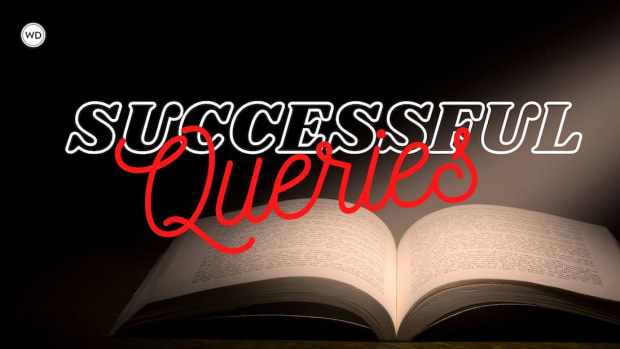
Successful Queries: Jamie Carr and Maya Ziv and "But How Are You, Really," by Ella Dawson
The best way to learn how to write a successful query is to read one. In this installment, find a query letter from literary agent Jamie Carr accepted by Maya Ziv for Ella Dawson's book, But How Are You, Really (Dutton).

Digging Into the Past to Develop a Strong Backstory
Bestselling author Victoria Helen Stone discusses the importance of digging into the past of your fictional characters to develop a strong backstory for your novel.

Meet the Agent: Jennifer March Soloway
In this extended version of Meet the Agent from the May/June 2024 issue of Writer's Digest, literary agent Jennifer March Soloway shares pitch tips and what she's looking for in new clients.

Jennifer Romolini: Surround Yourself with Good People
In this interview, author Jennifer Romolini discusses the raw honesty in her new memoir, Ambition Monster.

Fitting Into a Fiction Medium
Author Natalie Leif discusses the process of choosing which fiction medium to write their story: short story, novel, or graphic novel.
- Creative Writing
- Personal Essays
- Memoirs & Biographies
- Religious Studies
A Storm in a Forest
- Author: Fawad ul Hassan
Cold winds were steadily rustling through the green tops in the highlands. The sky was grey. A bit gloomier than it normally is at this time of the day. A storm was approaching from north-east. It was hauntingly quiet and peaceful. She was entering a forest with thick, tall trees. Her mind was pre-occupied with some deep thoughts. It appeared as if she was afraid, confused and maybe a bit upset too. Trees were farther apart from each other in the outskirts of the forest. As she progressed deeper into the forest, it got darker as the forest got increasingly denser.

By Michael Cory from Brooklyn, USA (rain/forest) CC BY 2.0
The overcast sky gave way to drizzle. After a short while, the rain got a lot heavier. The rain droplets were being slackened down by the ceiling of treetops made by thick, dense trees. The ground was completely covered with a carpet of leaves that parted from trees during the autumn. The thick layer of leaves was cushioning her feet as she was walked deeper into the forest. The storm was at its peak now. Even the rumbling sounds of lightning bolts could not get her out of her profound thoughts. It kept raining for a while and she continued to be lost deep in her own thoughts. Nothing changed for a while. Then the winds picked up and the rain got heavier. The trees were partially sheltering her from gusts of winds and outpour of rain. Water started to drip from her golden-brown hair. Her clothes were completely soaked in rainwater by now, but she was way too pre-occupied to worry about it or to feel cold.
After a while, the winds calmed down to an extent and the rain stopped. She kept on walking. Trees were now farther apart indicating that the forest was ending. The cold in the air was still unflinching. After a short while, she was about to reach her destination but she was a bit too over-whelmed and pre-occupied to realize it. As she was nearing the road that lied across her home, the noise of passing by traffic brought her back to reality. She appeared calm and content as if she had figured out the intricacies and complexities that were bothering her. It looked as if she has lost tail of the demons that were chasing her for a very long time. The house looked pretty in its true colours as if the rain had washed off all of its dullness. She saw her umbrella lying in the driveway of her house. Heavy rains were forecasted this season.
Recommended

Strong People
© 2018 Fawad ul Hassan
Trending Now
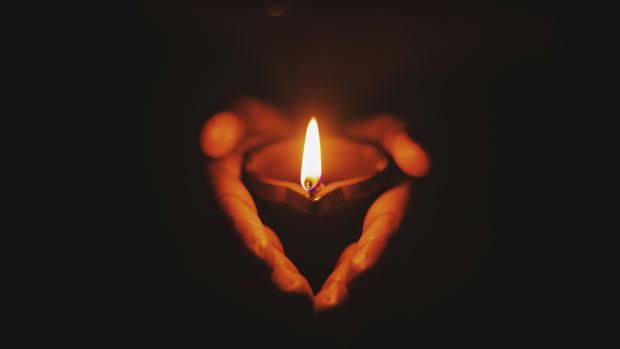
The Ever-Burning Candle

June is Here May is gone-Melancholic?

The Ogre Knew
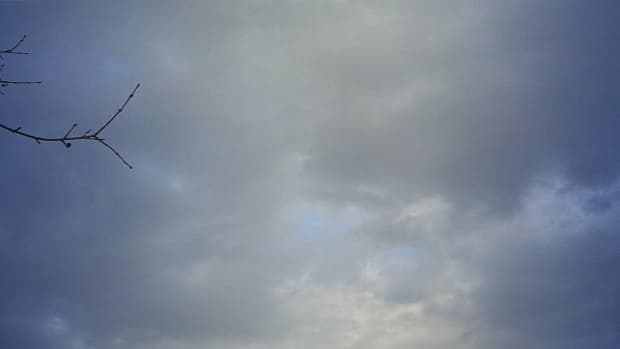
Alone in the Forest
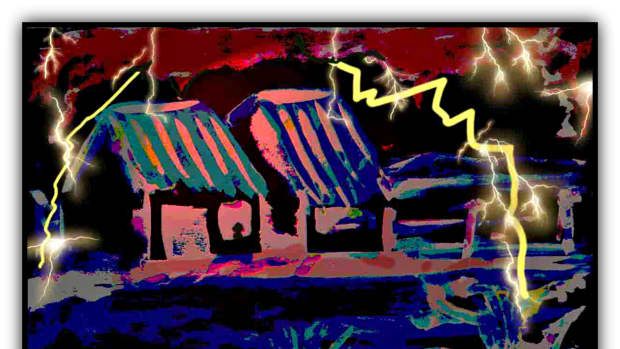
Storm Approaching

Storm Tower: A Short Story
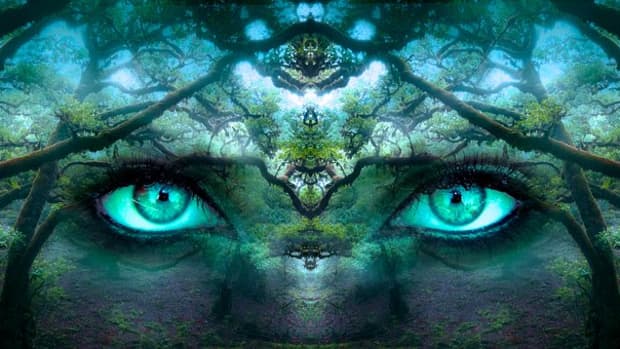
The Mysterious Forest of Lost Souls
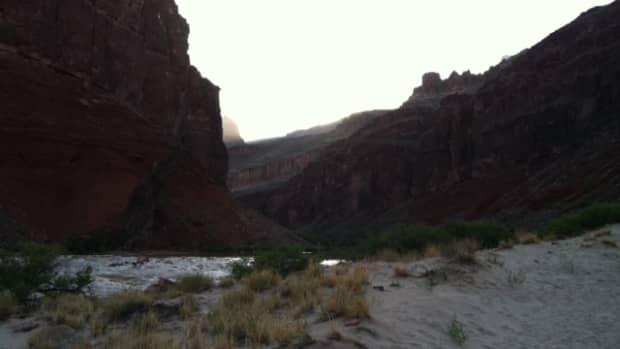
The Imperfect Storm

A descriptive sketch depicting the scene of a storm from beginning to end by use of intense imagery. Please enjoy!
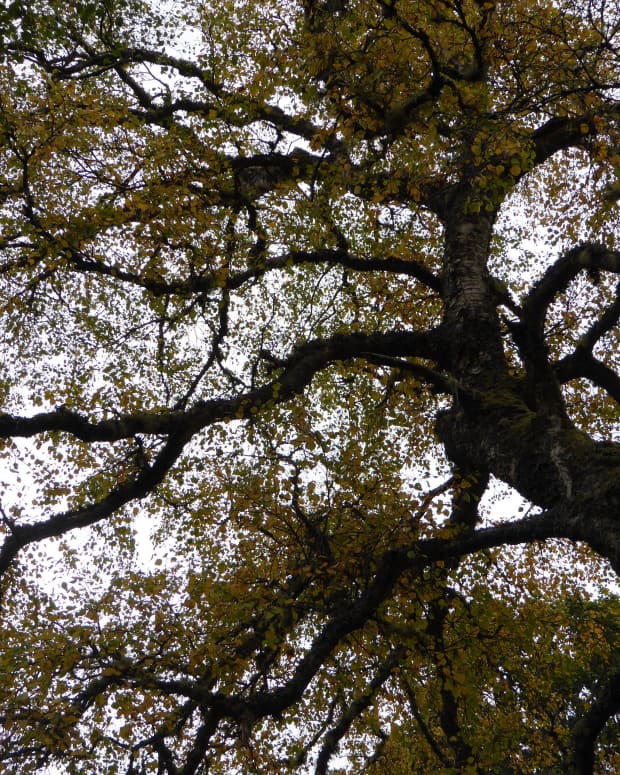
Follow Tania in her tense adventure through the woods in search of those she lost. A short story.

Storms are always foreboding as you never know what is in store. Might be much needed rain, or even a flood. Every storm is different. I personally love a storm, especially when tucked up in my bed. The flashes of lightening illuminating your room at night and deep rumbling, creates your own imagery

Martha Storm is a star, not a rock star, but a star of the corporate world. In the year 2052, Storm enterprises is head and shoulders above the competition which is why her new skyscraper, her company, and her life have been targeted. Thriller. 5,000 well chosen words. This may be my best fiction.

Cold, Damp, Dark and Dangerous is all that is known about The Mysterious Forest and what lies within.

When the anticipation of catastrophe comes at you with hurricane force, you may just sit back and wait for your fate to be revealed.
- Skip to main content
- Keyboard shortcuts for audio player

- LISTEN & FOLLOW
- Apple Podcasts
- Google Podcasts
- Amazon Music
Your support helps make our show possible and unlocks access to our sponsor-free feed.
A Short Story About A Hurricane

Steve Inskeep
The writer Lauren Groff's recent book of short stories includes one called "Eyewall" in which a woman decides to ride out a hurricane.
Copyright © 2018 NPR. All rights reserved. Visit our website terms of use and permissions pages at www.npr.org for further information.
NPR transcripts are created on a rush deadline by an NPR contractor. This text may not be in its final form and may be updated or revised in the future. Accuracy and availability may vary. The authoritative record of NPR’s programming is the audio record.

Creative Writing Club – members' area
² navigation, write your own story – hurricane.
Hurricanes can be up to 600 miles across. At the heart of these mega storms there are strong winds spiralling at speeds of 75 to 200mph. As well as lashing rain and winds, the mountainous waves they create can put ships and people in deadly peril.
⊕ Go through the steps below to create your story...
1. UK emergency services are bracing themselves for the worst hurricane ever. Choose a rescue location...
- Chiswick (River Thames)
- Port Talbot (Swansea Bay - Wales)
- Aberdeen (Scotland)
- Port Isaac (Cornwall)
2. The lifeboat station receive a call. Who is in trouble?
- Dave (surfer)
- Sophie (sea kayak instructor)
- Ellie (white water rafter)
- Brad (jet skier)
- Dr Mohammed (storm chasing scientist)
- Miss Jones and her class (primary school teacher)
- Mrs Moggin and Fluffy (old lady and her cat)
3. Choose two people to help with the rescue ....
- Syra (helicopter pilot)
- Emma (winch operator)
- Dylan (lifeboat captain)
- Tyson (lifeboat crew)
- Elora (paramedic)
- Sid (rescue diver)
- Sally (vet)
- Jess (mountain rescue)
- Alex (rescue climber)
4. Write about the rescue from the most exciting part...
If you are working with a partner write one line each.
Describing Storms: Adjectives with Examples

Hey there! Ever been caught in the midst of a raging storm? The thunder rumbling, the lightning crackling, and the rain pouring down in torrents. It’s a powerful and awe-inspiring experience, isn’t it? But have you ever wondered how to describe a storm using the perfect adjectives? Well, look no further! In this article, I’ll be sharing a list of adjectives that will help you vividly paint a picture of a storm in your writing. From words that capture the intensity of the storm to those that evoke the emotions it stirs, we’ve got you covered. So, let’s dive in and explore the world of adjectives for storms together!
Table of Contents
How to Describe storm? – Different Scenarios
When it comes to describing a storm, there are various scenarios that you may encounter. Each scenario requires a different set of words to vividly capture the essence of the storm and evoke the emotions it stirs. In this section, I will provide you with examples and adjectives that can help you paint a picture of a storm in different contexts.
1. Thunderstorm:
2. hurricane:, 3. tornado:, describing words for storm in english.
Thunderstorms:
Hurricanes:
Snowstorms:
Remember, when describing storms, choose adjectives that accurately capture the intensity, movement, and impact of the weather phenomenon. Use descriptive words that engage the reader’s senses and evoke emotions. By carefully selecting your adjectives, you can create a powerful and engaging description of a storm.
Adjectives for storm
Positive adjectives for storm with example sentences.
When describing storms, it’s important to choose adjectives that capture their intensity, movement, and impact. Here are some positive adjectives that can be used to depict storms:
Negative Adjectives for Storm with Example Sentences
When using negative adjectives to describe storms, it’s important to remember the awe-inspiring power and beauty they possess while also acknowledging their potential for danger and damage.

Synonyms and Antonyms with Example Sentences
Synonyms for storm:
Remember, when describing storms, the use of appropriate adjectives is essential in creating vivid imagery and engaging the reader’s senses. Whether you choose to depict the ferocity and power of a storm or the calm and tranquility after it has passed, selecting the right adjectives can greatly enhance your writing.
Describing storms with the perfect adjectives is a crucial skill that can greatly enhance your writing. By carefully selecting words that accurately depict the intensity, movement, and impact of storms, you can create vivid and engaging descriptions.
Throughout this article, we have explored various synonyms and antonyms for the word “storm” and provided example sentences to illustrate their usage. These adjectives not only expand your vocabulary but also allow you to convey different weather conditions with precision.
Related Posts
Describing blood: adjectives with examples, adjectives for age: describing words & examples, adjectives for fight: examples and describing words.

101 Words To Describe Weather
Writers know that using the weather in their descriptions is a great way to make stories more relatable. Use this comprehensive list of words that describe weather when you write.
Writers Write is a resource for writers and we have written about words that describe taste , smell , sound , and touch in previous posts. (We even have one for words that describe colours .) In this post, I have included words that describe weather.
Weather is a wonderful tool for writers. We can use it to foreshadow , create a mood , complicate a plot , show a character , and increase or decrease the pace of a story. We can even use it as a motif .
A setting without the weather is like a character without a wardrobe.
Remember that we need to describe weather through our characters’ interactions with their environments. We should not describe it like a weather report. You could show how cold it is by the clothes they choose to wear or mention the weather in dialogue.
Whatever you do, don’t leave it out. There are unintended consequences to a lack of setting , including a static character, a lack of atmosphere, an inability for the reader to relate to the place and time in the story, and a lack of details.
What Is Weather?
According to Oxford it is ‘the state of the atmosphere at a particular place and time as regards heat, cloudiness, dryness, sunshine, wind, rain, etc.’
Words To Describe Weather
General words describing weather.
- climate – the type of weather that a country or region has
- climate change – changes in the earth’s weather, including changes in temperature, wind patterns and rainfall, especially the increase in the temperature of the earth’s atmosphere that is caused by the increase of particular gases, especially carbon dioxide
- meteorology – the scientific study of weather
- seasonal – suitable or typical of the time of year it is now
- spell – a period when there is a particular type of weather
- weather forecast – a report on likely weather conditions for a period of time in the future
- zone – one of the large areas that the world is divided into according to its temperature
Words Describing Warm Weather
- balmy – warm and pleasant
- blistering – extremely hot in a way that is uncomfortable
- dog days – the hottest days of the year
- heatwave – a continuous period of very hot weather, especially when this is unusual
- Indian summer – a period of warm weather in autumn
- scorcher – an extremely hot day
- sunny – not stormy or cloudy
- thaw – ice and snow turns into water
- the heat – very hot weather
- tropical – like weather near the equator, climate that is frost-free
Words Describing Cold Weather
- bleak – very cold and grey
- biting – so cold that it makes you feel uncomfortable
- brisk – fairly cold and a fairly strong wind is blowing
- crisp – cold and dry
- fresh – fairly cold and the wind is blowing
- frosty – cold enough to produce frost
- hard – a very cold winter
- harsh – extremely cold and unpleasant
- icy – very cold, like ice
- raw – cold and unpleasant
- snowy – covered with snow
Words Describing Pleasant Weather
- calm – very little wind
- clear – no clouds, rain, etc.
- clement – pleasant because it is neither very hot nor very cold
- cloudless – no clouds in the sky
- equable – does not change very much
- fair – pleasant and not raining
- fine – sunny and not raining
- pleasant – dry and neither very hot nor very cold
- still – without wind
- temperate – a temperate climate or region is never extremely hot or extremely cold
- windless – without any wind
Words To Describe Unpleasant Weather
- bone-dry – completely without water or moisture
- fierce – very strong or severe
- foul – unpleasant, with rain, snow, or wind
- gale-force – an extremely strong wind
- gusty – the wind blowing in gusts
- humid – hot and wet in a way that makes you feel uncomfortable
- muggy – warm in an unpleasant way because the air feels wet
- murky – dark and unpleasant because of fog, clouds, etc.
- severe – extremely unpleasant and likely to cause harm or damage
- sultry – the air is hot and slightly wet
- threatening – clouds, skies, or seas show that the weather is likely to be bad
- torrential – rain falling in large amounts
- unseasonable – not the type of weather that you expect in a particular season
- windy – with a lot of wind
Words To Describe Wet & Cloudy Weather
- bank – a large mass of cloud or fog
- billow – a cloud that rises and moves in a large mass
- blizzard – a snowstorm with very strong winds
- cirrocumulus – small round clouds that form lines high in the sky
- cirrostratus – a thin layer of cloud found very high in the sky
- cirrus – a type of thin cloud found very high in the sky
- cloudy – full of clouds
- column – something that rises up into the air in a straight line
- cumulonimbus – a mass of very tall thick cloud that usually brings rain and sometimes thunder
- cumulus – a large low white cloud that is round at the top and flat at the bottom
- dull – when there are a lot of clouds and it is rather dark
- fog – a thick cloud that forms close to the ground or to water and is difficult to see through (fog is thicker than mist)
- fogbound – not able to operate normally because of thick fog
- foggy – full of fog or covered with fog
- gather – if clouds gather, they start to appear and cover part of the sky
- grey – when it is not very bright, because there is a lot of cloud
- hurricane – a violent storm with very strong winds
- inclement – unpleasantly cold or wet
- lower – if clouds lower, they are very dark, as if a storm is coming
- mist – small drops of liquid in the air
- misty – lots of mist in the air
- nimbus – a dark grey rain cloud
- overcast – a sky completely full of clouds
- pall – cloud that covers an area and makes it darker
- pea souper – thick low cloud that prevents you from seeing anything
- scud – clouds moving quickly
- sea mist – a thin low cloud that comes onto the land from the sea
- steam- the wet substance that forms on windows and mirrors when wet air suddenly becomes hot or cold
- storm cloud – a very dark cloud
- squall – a sudden violent gust of wind or localized storm, especially one bringing rain, snow, or sleet.
- thundercloud – a storm cloud producing thunder
- tsunami – an extremely large wave in the sea
- typhoon – a violent tropical storm with very strong winds
- vapour – very small drops of water or other liquids in the air that make the air feel wet
- vog – smog that contains dust and gas from volcanoes
Words To Describe Changes In Weather
- break – if the weather breaks, it changes unexpectedly, and usually becomes worse
- break through – if the sun breaks through the clouds, it appears from behind them
- brighten up – if the weather brightens up, it becomes sunnier
- clear up – if the weather clears up, the clouds or rain go away
- close in – if the weather closes in, it becomes unpleasant
- cloud – to become darker because grey clouds are forming in the sky
- ease – if bad weather such as wind or rain eases, it becomes less strong
- fickle – weather that is fickle changes often and unexpectedly
- lift – if something such as cloud or fog lifts, the weather improves and you can see clearly again
- melt away – if ice or snow melts away, it changes into water as it gets warmer
- thaw – if the weather thaws, it becomes warmer and causes ice or snow to change into liquid
- track – if weather tracks in a particular direction, it moves in that direction
The Last Word
I hope these words that describe weather help you with your writing.
If you’re looking for help with describing setting, buy our Setting Up The Setting Workbook .
More Posts Like This One:
- 155 Words To Describe An Author’s Tone
- 140 Words To Describe Mood In Fiction
- 75 Words That Describe Smells
- 20 Words Used To Describe Specific Tastes And Flavours
- 209 Words To Describe Touch
- 204 Words That Describe Colours
- 106 Ways To Describe Sounds
- Cheat Sheets for Writing Body Language
- 350 Character Traits

If you liked this blogger’s writing, you may enjoy:
- How To Tell If You’re Writing About The Wrong Character
- The Unintended Consequences Of A Lack Of Setting
- Why Memoirists Are Their Own Worst Enemies
- Why Writers Should Create A Setting Like A Character
- The Ultimate Memoirist’s Checklist
- 40 Ways To Write About Empathy
- How To Choose Your Genre
- What Is An Analogy & How Do I Write One?
- 5 Ways To Write About Real People In Memoirs
Sources: https://www.oxfordlearnersdictionaries.com https://www.macmillandictionary.com/thesaurus-category/british/general-words-for-climate-and-the-weather https://www.macmillandictionary.com/thesaurus-category/british/warm-and-hot-weather https://www.macmillandictionary.com/thesaurus-category/british/words-used-to-describe-cold-weather https://www.macmillandictionary.com/thesaurus-category/british/words-used-to-describe-calm-and-pleasant-weather https://www.macmillandictionary.com/thesaurus-category/british/words-used-to-describe-unpleasant-weather https://www.macmillandictionary.com/thesaurus-category/british/moisture-in-the-air-clouds-and-cloudy-weather https://www.macmillandictionary.com/thesaurus-category/british/changes-in-the-weather
Top Tip : Find out more about our workbooks and online courses in our shop .
- Description , Featured Post , Writing Resource , Writing Tips from Amanda Patterson
1 thought on “101 Words To Describe Weather”
And nowadays there’s also Pyrocumulonimbus.
Comments are closed.
© Writers Write 2022
How to Use Nature to Inspire Creative Writing
Quincy Hawley
The Writing Cooperative
Hurricane Florence is upon us. The news has been scaring the living poop out of the N.C. residents and understandably so. Hurricanes can be so detrimental.
In this article, I will demonstrate how to use nature — in this case a hurricane — to inspire a creative article.
Nature Provides Unlimited Topics to Write On
A part of my mindful writing strategy is to use that which is going on around me as inspiration to create original works.
Think about how awesome this is:
If you can draw creative inspiration from your surroundings, then you’ll never be out of ideas to write about.
Today, I used the hurricane as my inspiration, and this is the message I came up with.
It’s O.K. to fail at writing. It’s totally O.K. to fail. BUT — and I know it’s cliché — but we must get back up again because people need to read our words and our stories!
Don’t Allow Minor Failure Lead to Major Failure
Minor Failure: Small or large day-to-day mistakes, losses, under-performances, disappointments, defeats, errors, or shortcomings
Major Failure: Not making an effort to know what you want out of life; knowing what you want out of life and not pursuing it
As a fitness author and coach, I see this same phenomenon in the health and fitness world. People start these weight loss challenges and after succumbing to the cravings of ice cream and cake on day 3 or 4 of the 2-month challenge, they associate the minor failure with who they are as individuals, and they allow the minor failure to completely derail the rest of the challenge which is a major failure.
At the end, they haven’t lost the weight, and more importantly, their mindset is even worse than it was before they started. Now, they have positive proof to confirm the doubts they had prior to trying the challenge.
Writers face the same phenomenon.
Hurricane Florence and Failure — What’s The Link?
You may be asking yourself, “What does failing have to do with the hurricane?”
Well, I may be reaching here, but the similarity deals more with the meteorologists than with the hurricane itself. However, the meteorologists are all over the television because of the hurricane.
Writers Can Learn from Meteorologists
Meteorologists are the BEST people in the world at failing and continuing to push forward like it never happened.
They predict these storms to do one thing, and the EXACT opposite happens! My wife and I get so many laughs out of the meteorologists!
“This is going to be the storm of the century!” turns into the nothing of the century.
“We’re predicting three feet of snow!” turns into a bright and sunny day with no snow.
Regardless of their failures, these guys keep swinging and missing over and over again. But you had better believe that they are going to keep swinging, and they are going to be swinging with confidence!
For their persistence, I truly do respect them. It must be stressful to have so much responsibility entrusted into you.
How I Enjoyed My Recent Writing Challenge Failure
This weather related inspiration was right on time for me, and I bet it was right on time for you too. Here’s why:
I know you have had days where your writing productivity isn’t there. It’s normal to have those days. But my question to you is, “How do you respond after your failed writing days?”
Do you get down on yourself?
Do you question your ability to succeed as a writer?
Do you allow the negative emotions that come from failure to prevent your forward progress?
Even worse, do you sometimes take your writing frustrations out on the people closest to you?
I don’t know about you, but I’ve certainly been in all of those places before, and that is perfectly O.K.!
I’ll be vulnerable here and tell you that I’m failing my 3 articles a day for 30 days challenge
That’s right. I’m failing.
It’s O.K. to fail! Learn to enjoy your failures and learn from them! Being scared to fail doesn’t lead one to success. Only the love for success will lead you to succeeding. Therefore, fail valiantly! Take on big challenges like writing 3 times a day for 30 days! Who cares if you stumble?
The only real pressure and criticism will come from you. How do I know? The only criticism of failing my challenge has come from me!
You see, the fact that I failed at my 3 articles a day challenge isn’t the problem; it’s what I think about the failure that matters the most.
The truth is that you — the reader or follower — could probably care less whether or not I wrote 3 articles a day, 20 articles a day, or no articles a day, and I could care less about what you think about my performance in the challenge.
But I do care about what I think of my own performance in the challenge because I know how to enjoy my failures!
I’ll admit that just before writing this article, I felt a little bit disappointed in myself. I felt like I had failed.
I was boasting in the early days of the challenge as to how I was going to “complete the challenge like a true warrior”.
While I have had a couple of days where I only did one article, I’m still going to do my best to finish strong.
This is a great time to recite the writer’s anthem.
The Writer’s Anthem:
I’m a writer, and sometimes I fail. I can’t go back and should have done it differently; therefore, I will learn from my failure and cease my attitude of self-sabotage. I will look at my failure and find enjoyment and inspiration in it. Today, I will write. In this moment, I will write.
Whether you were in a challenge, or if you were merely writing to meet your goals, if you stumbled, let go of your ego, and get back to your writing.
When you fall down and miss days of writing or write a crappy article, just think like our meteorologist friends, recite the writer’s anthem, and keep on swinging!
Failed Writing Attempts Don’t Hurt Anyone
At least our mistakes don’t potentially put people in danger! As a meteorologist, if you tell the people in South Carolina that the odds are slim that the hurricane comes their way, and then the hurricane directly hits them… whew! It would suck to be a meteorologist at that moment.
But for me to tell everyone on Medium that I’m going to write 3 articles a day, and then to only write 1 article on some days… well that’s a whole different ball game. I’m sure you would be completely devastated that I didn’t ‘successfully’ complete the challenge.
As I bring this article to a close, remember that we are ALL going to fail at times, and it is our duty and obligation as writers to learn from these failures. Not only should we learn from them, but we should learn to enjoy our failures!
I’ve thoroughly enjoyed writing this article, which was inspired by a negative thought of my own failed writing challenge.
I’ve gotten some laughs out of this self-proclaimed masterpiece as I’ve written it.
I’m sitting in my bed cozied up beside my wife at my parents’ house with my 3-year-old daughter playing with her grandmother in the background with the wind and the rain of the hurricane pelting against the house. What more could I ask for?
I’m mindfully writing. I’m inspired by nature. I’m enjoying my failures. I’m thriving as a writer in my own little world, and I wish the same for you!
Dream Life Motivation : Discover! Pursue! Achieve!
If you enjoyed this article, let me know by following me or giving the article a clap! Thanks for reading!

Written by Quincy Hawley
As the founder of Dream Life Motivation and co-founder of Get MotiVETed, I'm a speaker, author, and coach. I also have a huge passion for personal development!
Text to speech

Weather Writing Prompts: Explore Atmospheric Narratives
My name is Debbie, and I am passionate about developing a love for the written word and planting a seed that will grow into a powerful voice that can inspire many.

Why choose our weather writing prompts?
Unleashing the power of weather in your writing, let weather weave the tapestry of your words, enhance your descriptive skills with weather writing prompts, crafting compelling characters: weather’s role in character development, (un)predictable weather: using weather as a plot device, from sunny to stormy: portraying mood and setting through weather, creating tension and conflict: harnessing the forces of nature, weather as a symbol: exploring deeper meanings in your writing, transforming atmosphere: tips for bringing weather to life in your narratives, enhancing the atmosphere: techniques to infuse life into weather in your stories, frequently asked questions, to conclude, weather writing prompts: explore atmospheric narratives.
Unleash your creativity and embark on a thrilling journey through atmospheric narratives with our weather writing prompts. Whether you’re an aspiring author or simply looking to enhance your writing skills, these prompts will transport you into the captivating world of weather and help you craft compelling stories that truly come alive.
Discover the magic of weather-related plotlines and characters as you engage with the unpredictable forces of nature. With our diverse range of prompts, you can explore a wide array of weather phenomena and their impact on individuals, societies, and even fictional realms. From raging storms to serene sunsets, each prompt presents a unique opportunity to vividly describe settings, evoke emotions, and weave gripping tales.
Here are a few reasons why our weather writing prompts are a must-try:
- Diverse scenarios: Our prompts cover a broad spectrum of weather events, allowing you to delve into both common and extraordinary meteorological situations.
- Deep exploration: You’ll have the chance to dive into the intricacies of weather patterns, uncovering the impact they have on people, places, and even otherworldly realms.
- Emotional connection: Experience the power of weather as a character in your narratives, leveraging its ability to heighten tensions, mirror characters’ moods, or even serve as a catalyst for change.
- Flexibility and adaptability: Our prompts are designed to suit writers of all backgrounds and genres, providing a foundation for creativity that can be tailored to your own unique vision.
Unlock your storytelling potential with our weather writing prompts and let your imagination take flight amidst the swirling winds, the gentle raindrops, and the commanding thunderclaps. Dive into a world where the atmosphere serves as the backdrop for unforgettable narratives!

Weather holds an immense power over our lives, and it can do the same for your writing. Incorporating weather into your stories adds depth, emotion, and atmosphere, enhancing the readers’ experience by immersing them in a vibrant and dynamic world. From the tranquil embrace of a warm summer breeze to the furious onslaught of a thunderous storm, the weather becomes a character itself, influencing the mood, shaping events, and reflecting the inner thoughts and struggles of your protagonists.
When skillfully employed, weather can become a tool to evoke a wide range of emotions. It sets the stage for pivotal moments, emphasizes tension, or serves as a respite from daily hardships. Picture a serene sunrise casting a golden hue on a character’s life after a period of darkness, or the relentless rain mirroring a protagonist’s despair during an important setback. By painting vivid weather scenes, you harness the raw power of nature to captivate your readers and enhance the overall impact of your writing.
- Transport your readers: Weather can transport your audience to different atmospheric surroundings, whether it be a windswept moor, a bustling city amid a gentle snowfall, or an arid desert swept by a scorching wind.
- Symbolism at its finest: Weather elements can serve as powerful symbols that echo the themes and conflicts of your narrative. A thick fog may mirror a character’s confusion, while a rainbow might symbolize newfound hope.
- Create a sense of urgency: Thunder, lightning, or an approaching storm can inject urgency into your story, propelling the plot forward and adding layers of suspense and anticipation.
Unlock the true potential of your writing by harnessing the influence of weather. Allow it to breathe life into your character’s journeys, shape their destiny, and ignite emotions within your readers. By embracing the power of weather, your writing will surge to new heights, enveloping your audience in a world they won’t want to escape.
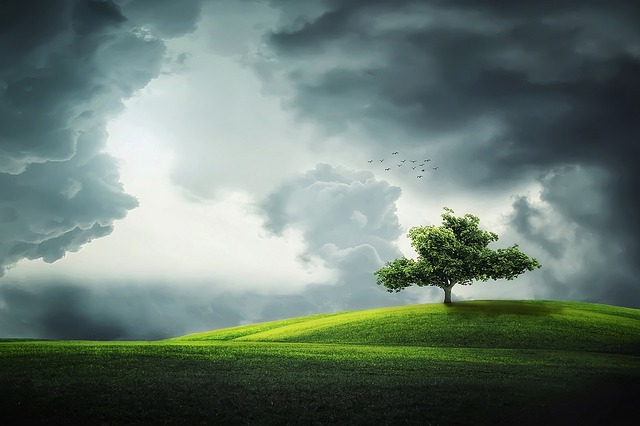
Are you looking to elevate your descriptive writing skills and immerse your readers in captivating atmospheric descriptions? Look no further! Our weather writing prompts are the perfect tool to help you hone your storytelling abilities while exploring the intricacies of Mother Nature’s moods. From blistering heatwaves to bone-chilling snowstorms, these prompts will ignite your creativity and enable you to write vivid scenes that transport your audience.
1. Dive into Extreme Weather Encounters: Step out of your comfort zone and challenge yourself to describe extreme weather events. Picture yourself caught in a wild thunderstorm, with lightning illuminating the sky above and torrents of rain cascading down. Explore the sensations, emotions, and details you would include to make your readers feel as though they are right there with you.
2. Capture the Serenity of a Calm Spring Morning: Shift gears and transport your readers to a tranquil scene of a peaceful spring morning. Paint a picture of dew-kissed flowers, the gentle sway of willow branches, and birdsong filling the air. Think of unique ways to describe the softness of a fresh breeze, the vibrant colors of budding blossoms, or the delicate scent of blooming flowers, enticing your readers to experience the serenity for themselves.
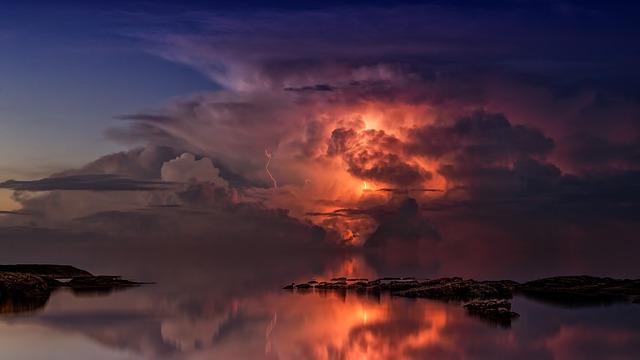
Weather is often overlooked as a powerful tool in crafting well-rounded and compelling characters. While it may seem mundane, the weather can add depth and dimension to your characters, revealing their personality traits, emotions, and even shaping their actions and decisions. By harnessing the influence of weather on your characters, you can create a more immersive and realistic story that captivates readers.
1. Setting the Mood: The weather can set the tone of a scene and evoke specific emotions in your characters. For example, a brooding and stormy sky can reflect a character’s inner turmoil, while a sunny and vibrant day can convey their joy and optimism. By carefully selecting weather conditions that align with your character’s current emotional state, you can enhance the reader’s connection with the character and intensify the impact of key moments in the story.
2. Symbolism and Foreshadowing: Weather can be a powerful symbol, subtly hinting at future events or foreshadowing important plot points. A sudden gust of wind might foreshadow a disruptive force entering the character’s life, or a serene morning mist could symbolize their inner clarity before a major decision. These symbolic weather patterns add layers of meaning, increasing the depth and complexity of your characters.
Weather is not just something we experience on a day-to-day basis; it can also add depth and excitement to our stories. As a powerful plot device, weather has the ability to influence events, reveal character traits, and create tension. By incorporating weather into your narrative, you have the opportunity to captivate readers and enhance the emotional impact of your story.
One of the compelling aspects of using weather in storytelling is its inherent unpredictability. Just like in real life, weather in literature can be a fickle force, throwing unexpected obstacles or opportunities in the path of your characters. From sudden thunderstorms to blistering heatwaves, extreme weather events can act as catalysts, driving the plot forward in ways that keep readers on the edge of their seats. Moreover, utilizing weather as a plot device allows you to tap into the symbolism associated with different weather conditions.
- Rain: Rain can represent renewal, washing away burdens, or creating a somber atmosphere.
- Snow: Snow often conveys isolation, purity, or the idea of starting anew.
- Heatwave: Oppressive heat can heighten tension, leading to heightened emotions or conflict.
- Fog: Fog can be used to create mystery, uncertainty, or a sense of confusion.
By skillfully utilizing these weather elements, you can introduce symbolism and foreshadowing, reinforcing the themes and motifs of your narrative. Furthermore, weather can act as a powerful tool in character development. How a character reacts or responds to changes in weather can reveal their true nature, their fears, or their resilience. For example, a protagonist seeking solace might find comfort in the rain, while another character might embrace the storm as a challenge to prove their strength.
When it comes to storytelling, weather can be a powerful tool for setting the mood and creating a captivating atmosphere. By carefully selecting and portraying different weather conditions, writers can enhance the readers’ experience and deeply immerse them in the story. Whether it’s a sunny day with clear skies or a stormy night filled with thunder and lightning, the weather can evoke a range of emotions and help shape the overall tone of the narrative.
One way weather can portray mood is through the use of contrasting elements. For example, a bright and sunny day with a gentle breeze can evoke feelings of joy, happiness, and serenity. On the other hand, a stormy setting, with dark clouds, torrential rain, and howling winds, can create a sense of tension, fear, or even chaos. By juxtaposing these two extremes, writers can effectively highlight the sharp contrast between different emotions or events in the story.
- Lightning and Thunder: The sudden crack of thunder or flash of lightning can bring a dramatic and intense element to a scene, representing danger, power, or even a turning point in the story.
- Fog and Mist: A thick layer of fog or mist can create an eerie and mysterious atmosphere, shrouding the surroundings in uncertainty and making them seem otherworldly.
- Gentle Rain: Soft rainfall can be used to symbolize renewal, growth, or a calming effect on the characters, often associated with reflection or introspection.
By leveraging the emotional impact of weather, writers can effectively draw readers into their narrative, making them feel as though they are experiencing the story alongside the characters. From a sunny day that sets the stage for a heartwarming romance to stormy weather intensifying a climactic scene, the use of weather as a tool for portraying mood and setting is truly limitless. So, next time you find yourself writing a story, don’t forget to consider the power of weather and how it can greatly enhance the depth and impact of your storytelling.
If you’re looking to create tension and conflict in your writing, why not turn to the powerful forces of nature for inspiration? These natural elements have an inherent ability to evoke emotions, drive plots forward, and create an atmosphere of suspense that keeps readers gripped till the very end.
One way to harness the forces of nature is through the use of extreme weather conditions. Incorporating a raging storm or a bone-chilling blizzard into your story can instantly raise the stakes and intensify the conflict. Imagine your protagonist being trapped in a deserted cabin, battling the relentless wind and snow, while their adversary lurks outside. The turmoil and danger lurking outside serve as constant reminders of the imminent threat, keeping readers on the edge of their seats.
- Lightning strikes: Symbolic of sudden and unexpected events, lightning strikes can add an element of surprise to your story.
- Tornadoes and hurricanes: These powerful natural disasters can create chaos and destruction, offering a perfect backdrop for high-stakes confrontations.
- Severe heatwaves: Intense heat can quickly escalate tensions among characters, leading to explosive conflicts.
To truly captivate your readers, it’s essential to delve beyond the superficial effects of nature and explore how they mirror the inner turmoil of your characters. Consider using metaphors and symbolism to represent their internal conflicts through the external forces of nature. By weaving these elements together, you’ll create a powerful narrative that resonates with readers and leaves them eagerly turning the pages.
Weather has long been used as a powerful symbol in literature, helping to convey emotions, foreshadow events, and add depth to the overall meaning of a story. Just as stormy skies can symbolize turmoil and conflict, sunny days can represent hope and happiness. By incorporating weather symbolism into your writing, you can create a more engaging and layered narrative that resonates with your readers on a deeper level.
One of the key advantages of using weather symbolism is its ability to evoke specific emotions. Just think about how a gentle rain shower can create a sense of calm and introspection, while a fierce thunderstorm can heighten tension and evoke a sense of impending danger. By carefully choosing the weather conditions in your scenes, you can enhance the mood and atmosphere, guiding your readers’ emotions and reactions. Whether it’s using a sweltering heatwave to symbolize the intensity of a character’s desires or a dense fog to represent confusion and uncertainty, the possibilities are endless.
Weather can be more than just a backdrop in your narratives; it can become a character itself, adding depth and emotion to your storytelling. Here are some tips for transforming the atmosphere and bringing the weather to life in your writing:
- Setting the Stage: Begin by establishing the current weather conditions to immerse your readers in the scene. Describe the temperature, wind, or any unique meteorological phenomena to create a vivid visual and sensory experience.
- Create Atmosphere: Don’t limit yourself to basic descriptions; delve deeper into the emotional impact of the weather. For instance, a gloomy rainstorm could reflect feelings of sadness or hint at impending danger. Utilize metaphors and similes, comparing the weather to a state of mind, to evoke a stronger emotional response from your readers.
- Show, Don’t Tell: Rather than simply stating the weather conditions, show how they affect your characters and their surroundings. Highlight physical reactions, such as hair blowing in the wind or clothes clinging to damp skin, to convey the intensity of the weather and its influence on the story.
Remember, the weather can drastically shape the mood, tension, and even plot progression in your narratives. Utilize these techniques to harness the power of the elements and elevate your storytelling to new heights.
Q: What are weather writing prompts? A: Weather writing prompts are creative prompts or ideas that encourage writers to explore atmospheric narratives inspired by elements of the weather.
Q: How do weather writing prompts work? A: Weather writing prompts provide a starting point or a theme related to weather. Writers can use these prompts as inspiration to write stories, poems, or descriptive narratives that revolve around the atmospheric conditions.
Q: Why are weather writing prompts beneficial? A: Weather writing prompts allow writers to tap into their imagination and create narratives infused with the power and beauty of the weather. They offer a unique way to explore descriptive storytelling and evoke emotions through atmospheric elements.
Q: Can you provide examples of weather writing prompts? A: Certainly! Here are a few examples of weather writing prompts: 1. Write a story that takes place during a torrential rainstorm. 2. Describe the setting of a coastal town during a foggy morning. 3. Write a poem inspired by the tranquility of a gentle snowfall. 4. Imagine a character caught in a raging thunderstorm and write about their experience. 5. Create a narrative in which a heatwave plays a significant role.
Q: Are weather writing prompts suitable for all genres? A: Absolutely! Weather writing prompts can be used in various genres, including fiction, poetry, and even non-fiction. They can add depth, imagery, and atmosphere to any type of writing.
Q: Can weather writing prompts be used by writers of all skill levels? A: Yes, weather writing prompts are suitable for writers of all skill levels. Whether you’re a beginner exploring your creativity or an experienced writer looking for fresh inspiration, these prompts can help you develop your writing skills and spark your imagination.
Q: How can weather writing prompts improve my writing? A: Weather writing prompts encourage the development of descriptive skills, enhance the ability to evoke emotions, and foster creativity. By incorporating weather elements into your narratives, you can engage readers on a sensory level and create a more immersive storytelling experience.
Q: Where can I find weather writing prompts? A: Weather writing prompts can be found in various places. You may discover them in writing resources, creative writing books , online writing communities , or even by simply observing the weather around you and letting it inspire your own ideas.
Q: Is it necessary to stick strictly to the weather prompts? A: Not at all! Weather writing prompts are meant to inspire your creativity. While adhering to the prompt is one approach, you can also use them as a springboard to create your unique narratives that incorporate elements of the weather in imaginative ways.
Q: Can weather writing prompts be used for collaborative writing exercises ? A: Certainly! Weather writing prompts can be an excellent tool for collaborative writing exercises. They provide a shared starting point and theme, allowing multiple writers to explore different aspects of the weather and weave them together into a cohesive narrative.
In conclusion, weather writing prompts offer a unique opportunity to explore atmospheric narratives, allowing writers to vividly depict settings and evoke emotions. So, grab a pen and let your imagination soar with the power of weather!
Do You Italicize Book Titles in Formal Writing? Expert Guidance
Writing in Math Prompts: Integrate Mathematics and Writing
Leave a Comment Cancel reply
Save my name, email, and website in this browser for the next time I comment.
Reach out to us for sponsorship opportunities.
Welcome to Creative Writing Prompts
At Creative Writing Prompts, we believe in the power of words to shape worlds. Our platform is a sanctuary for aspiring writers, seasoned wordsmiths, and everyone. Here, storytelling finds its home, and your creative journey begins its captivating voyage.
© 2024 Creativewriting-prompts.com
- International
- Education Jobs
- Schools directory
- Resources Education Jobs Schools directory News Search

Informative and descriptive writing: hurricanes
Subject: English
Age range: 7 - 14
Resource type: Worksheet/Activity
Last updated
28 August 2018
- Share through email
- Share through twitter
- Share through linkedin
- Share through facebook
- Share through pinterest

This animated Power Point collates several pieces of writing about hurricanes. There are informative texts, diagrams, eye-witness reports as well as poems about hurricanes. There are before and after descriptions as well as a transcript of a public radio announcement broadcast before a hurricane strike. Having absorbed and discussed the varied texts, students are then given the option of writing either a news report, an appeal leaflet or a poem inspired by this fascinating phenomenon. I include a resource about wild wind which would be useful when discussing poetry and in particular personification. Suitable for ages 10+
Tes paid licence How can I reuse this?
Your rating is required to reflect your happiness.
It's good to leave some feedback.
Something went wrong, please try again later.
This resource hasn't been reviewed yet
To ensure quality for our reviews, only customers who have purchased this resource can review it
Report this resource to let us know if it violates our terms and conditions. Our customer service team will review your report and will be in touch.
Not quite what you were looking for? Search by keyword to find the right resource:

How To Describe Clouds In Writing (100+ Examples & Words)
Clouds, ever-present in our skies, are more than just fluffy formations. They hold stories, emotions, and atmospheres within their wispy contours.
Here is how to describe clouds in writing:
Describe clouds in writing by focusing on their shape, color, texture, movement, altitude, density, size, associated sounds, interaction with light, weather implications, emotional tone, and symbolism. Use vivid words and phrases to bring these elements to life in your narrative.
In this guide, we’ll explore different types of clouds and key elements to bring them to life in your writing.
Types of Clouds

Table of Contents
Here are some of the most common types of clouds to describe in your writing:
- Cirrus : High-altitude, thin clouds, often wispy and light, suggesting fair weather but sometimes indicating a change.
- Cumulus : Fluffy, cotton-like clouds, generally white and often seen during sunny days, symbolizing cheer and tranquility.
- Stratus : Layer-like, flat clouds covering the sky like a blanket, often gray, associated with overcast days and light rain.
- Nimbostratus : Dark, thick clouds, covering the sky and bringing continuous rain or snow, a harbinger of gloom.
- Cumulonimbus : Towering, imposing clouds often associated with storms and extreme weather, symbolizing turmoil or tension.
Elements of Clouds to Describe in a Story
Now, let’s go over the key elements of clouds to describe in your stories.
You’ll want to consider describing the:
Clouds take on myriad shapes, each telling a different story. The shape of a cloud can reflect the mood of a scene or hint at changes in the weather.
- “The clouds morphed into dragons and castles, fueling my daydreams.”
- “Wispy clouds stretched across the sky, like paint strokes on a blue canvas.”
- “The clouds were cotton balls, dotting the expanse of blue.”
- “Dark, ominous clouds loomed overhead, foretelling a storm.”
- “The clouds twisted into spirals, as if dancing to an unseen melody.”
- “Ragged clouds frayed at the edges, torn by the wind’s unseen hands.”
- “Clouds shaped like anvils warned of the thunderstorm’s approach.”
- “Fluffy, shapeless clouds meandered lazily across the sky.”
- “The clouds formed a thick blanket, smothering the sun.”
- “Sharp-edged clouds cut through the sky, a contrast to the soft sunset.”
The color of clouds can set the tone of a scene, from serene blues to fiery oranges and reds, or somber grays.
- “The clouds blushed pink and orange at sunset, a canvas of warmth.”
- “Gray clouds, heavy with unshed rain, darkened the horizon.”
- “The clouds were a brilliant white, glowing in the midday sun.”
- “Black clouds swirled above, menacing and heavy with threat.”
- “Golden clouds crowned the morning sky, heralding a new day.”
- “The clouds turned a soft lavender in the twilight.”
- “Dark blue clouds hovered at dusk, heavy with mystery.”
- “Silver-lined clouds glimmered, promising hope amidst the storm.”
- “Pale yellow clouds drifted, touched by the dawn’s early light.”
- “The clouds were tinged with red, echoing the sunset’s last flames.”
Texture brings clouds to life, giving them character and depth, from smooth silkiness to rough, tumultuous appearances.
- “The clouds were smooth, like a layer of cream spread across the sky.”
- “Rough-edged clouds, ragged from the wind, scudded across the horizon.”
- “The clouds appeared soft, inviting one to imagine lounging on them.”
- “Turbulent clouds churned in the sky, a tumult of grays and whites.”
- “Delicate, fine-textured clouds filtered the sunlight, casting gentle shadows.”
- “Thick, woolly clouds blanketed the sky, a protective cover.”
- “Feather-like clouds brushed the blue canvas above in gentle strokes.”
- “Granular clouds, clumpy and uneven, hinted at the brewing storm.”
- “The clouds were sleek, streamlined by the high winds.”
- “Fluffy, airy clouds bounced along the sky, light and ephemeral.”
The movement of clouds adds dynamism to a scene, reflecting the passage of time or the whisper of the wind.
- “The clouds drifted lazily, unhurried by the gentle breeze.”
- “Swift-moving clouds raced across the sky, heralding a change.”
- “The clouds seemed to dance, swirling and twirling gracefully.”
- “Slow, meandering clouds mirrored my leisurely Sunday thoughts.”
- “The clouds surged forward, like an army on the move.”
- “Gentle clouds glided smoothly, a serene procession in the heavens.”
- “Rapidly changing clouds mirrored my tumultuous emotions.”
- “The clouds crept across the sky, stealthy and unnoticed.”
- “Energetic clouds zipped by, energizing the day.”
- “Stagnant clouds hung heavily, mirroring the oppressive mood.”
The height of clouds in the sky can influence the perspective and scale in a narrative, from lofty and remote to close and intimate.
- “High cirrus clouds, distant and ethereal, decorated the upper reaches of the sky.”
- “Mid-level clouds hovered, forming a canopy over the landscape.”
- “Low-hanging clouds brushed the treetops, a misty embrace.”
- “Elevated clouds towered above, guardians of the sky.”
- “The clouds sat high, untouchable and serene in their lofty domain.”
- “Clouds at eye level swept past, close enough to touch.”
- “Distant clouds, small from altitude, painted the horizon.”
- “The clouds rose high, stretching upwards, ambitious and proud.”
- “Low, dense clouds created a ceiling of gray above.”
- “Sky-high clouds seemed to touch the edge of space.”
The density of clouds can convey everything from lightness and clarity to oppression and heaviness.
- “The clouds were thin, barely veiling the sun.”
- “Dense clouds packed the sky, a solid gray expanse.”
- “Sparse clouds allowed ample sunlight, casting light shadows.”
- “Thick clouds blanketed the sky, a heavy lid over the earth.”
- “Light, scattered clouds dotted the blue, a delicate pattern.”
- “Solid clouds formed an unbroken ceiling, reflecting my somber mood.”
- “The clouds were airy, a gossamer layer in the sky.”
- “Opaque clouds blocked the sun completely, a foreboding barrier.”
- “Wispy clouds, sparse and delicate, adorned the sky.”
- “The clouds were so dense, they merged into a singular mass.”
The size of clouds can be used to reflect magnitude, from grand and imposing to small and insignificant.
- “Huge clouds dominated the sky, awe-inspiring in their magnitude.”
- “Tiny clouds speckled the sky, modest in their presence.”
- “Enormous clouds loomed overhead, almost overwhelming.”
- “Small, delicate clouds flitted across the vast blue.”
- “Gigantic clouds towered, a display of nature’s grandeur.”
- “Petite clouds, almost unnoticed, added a subtle charm.”
- “Massive clouds stretched across the horizon, a majestic display.”
- “Little clouds, like puffs of cotton, adorned the sky.”
- “The clouds were colossal, dwarfing the landscape below.”
- “Minute clouds, barely discernible, hinted at tranquility.”
While clouds themselves are silent, their presence can suggest sounds, enhancing the sensory experience in a story.
- “The clouds seemed to whisper secrets to the wind.”
- “Thunder rumbled from the belly of the dark clouds.”
- “The silent clouds moved soundlessly, a mute ballet above.”
- “Rain hissed as it fell from the dense, gray clouds.”
- “The clouds, thick and heavy, muffled the world’s sounds.”
- “Wind howled around the storm clouds, a symphony of fury.”
- “The clouds’ quietness accentuated the birds’ cheerful songs.”
- “Snowflakes whispered down from the soft, white clouds.”
- “The clouds passed in silence, observers to the earth’s noises.”
- “Lightning crackled from the charged, electric clouds.”
Interaction with Light
Clouds interact with light in various ways, creating a play of shadows and colors that can set a scene’s tone.
- “The clouds filtered the sunlight, softening the day’s harshness.”
- “Sunbeams pierced the clouds, spotlights on the ground below.”
- “Shadows shifted as clouds moved across the sun’s path.”
- “The clouds glowed with the sunset’s fiery colors.”
- “Moonlight silvered the edges of the night clouds.”
- “The clouds cast a dappled pattern, light dancing on the earth.”
- “Sunrise turned the clouds pink, a gentle awakening.”
- “The clouds dimmed the daylight, a soothing gray filter.”
- “Rainbow hues fringed the clouds, a celestial spectacle.”
- “The clouds, heavy with rain, darkened the afternoon light.”
Weather Association
Clouds are often harbingers of weather, their presence hinting at what’s to come.
- “Cumulonimbus clouds warned of the approaching storm.”
- “Gentle clouds promised a day of clear, calm weather.”
- “Gray, heavy clouds foreshadowed rain’s imminent arrival.”
- “Fast-moving clouds hinted at a changing weather pattern.”
- “The unbroken cloud cover suggested a day of steady rain.”
- “Sparse clouds indicated a continued stretch of sunny days.”
- “Dark clouds amassed, a prelude to thunderstorms.”
- “Wispy clouds, high in the sky, signaled fair weather.”
- “The rapidly darkening clouds hinted at a sudden downpour.”
- “The steady build-up of clouds foretold a snowstorm.”
Emotional Tone
Clouds often mirror or contrast the emotional tone of a scene, adding depth and resonance.
- “The cheerful, fluffy clouds matched my joyful mood.”
- “Gloomy clouds echoed my somber thoughts.”
- “The turbulent clouds mirrored my inner turmoil.”
- “Peaceful clouds calmed my restless spirit.”
- “Foreboding clouds intensified the sense of dread.”
- “The playful movement of the clouds lifted my spirits.”
- “Melancholic clouds resonated with my longing.”
- “The serene clouds provided a counterpoint to my anxiety.”
- “Threatening clouds amplified the tension in the air.”
- “The bright, clear sky and sparse clouds reflected my optimism.”
Clouds can symbolize various themes and motifs, adding layers of meaning to a narrative.
- “Clouds like white doves symbolized peace in the turmoil.”
- “The ever-changing clouds represented life’s constant flux.”
- “Dark clouds stood as symbols of impending doom.”
- “Light, ethereal clouds symbolized freedom and escape.”
- “The cloud’s shadow on the ground was a metaphor for grief.”
- “Bright, sunlit clouds symbolized hope amidst despair.”
- “The solitary cloud was a symbol of isolation.”
- “Clouds gathering at sunset symbolized an ending and a beginning.”
- “The storm cloud was a metaphor for internal conflict.”
- “Clouds parting to reveal blue sky symbolized clarity after confusion.”
50 Best Words for How to Describe Clouds in Writing
Here are some of the best words for how to describe clouds in writing:
- Feather-like
- Translucent
50 Best Phrases for Describing Clouds in Writing
Here are the best phrases for describing clouds in your stories:
- “Like tufts of cotton in a painter’s sky.”
- “Whispers of vapor in the azure expanse.”
- “Gentle giants marching across the horizon.”
- “Silhouettes of gray in a stormy ballet.”
- “Ivory peaks touching the heavens.”
- “Shadows of the skies, heavy with tales.”
- “Veils of mist cloaking the mountaintops.”
- “Golden edges kissed by the sunset.”
- “A tapestry of light and shadow.”
- “Flotilla of dreams in a sea of blue.”
- “Majestic towers heralding the storm.”
- “Gloomy blankets, dampening the earth’s spirits.”
- “Fleeting whispers of the passing breeze.”
- “Guardians of the twilight, tinged with pink.”
- “Wandering spirits of the upper world.”
- “Silent witnesses to the unfolding day.”
- “The sky’s mood, ever-changing and capricious.”
- “Sun’s canvas, painted in hues of gray.”
- “Messengers of the impending tempest.”
- “Symphony in white, conducted by the wind.”
- “Soft as the down of newborn birds.”
- “Charcoal smudges on the horizon’s edge.”
- “Melancholy giants, ponderous and slow.”
- “Misty shrouds, heralds of the morning light.”
- “Invisible ink slowly spreading across the sky.”
- “Gossamer threads woven by the dawn.”
- “A dance of light, air, and water.”
- “A quilt of white, stitched by the breeze.”
- “Spectral shapes in a dreamy expanse.”
- “The sky’s emotion, raw and unfiltered.”
- “Celestial wanderers on an endless journey.”
- “Ships of vapor, sailing the sky’s ocean.”
- “The sun’s soft touch on the morning clouds.”
- “Moody canvases of the tempest’s art.”
- “Fragile lacework against the blue infinity.”
- “Nature’s poetry, written in vapor and light.”
- “A parade of shapes, ever-evolving.”
- “The day’s first blush on sleepy clouds.”
- “Midnight sentinels, guarding the moon’s realm.”
- “Echoes of the sky’s deepest thoughts.”
- “Rosy fingers of dawn caressing the clouds.”
- “Monoliths of mist, standing tall and proud.”
- “A world aloft, free and untamed.”
- “The gentle sigh of the resting earth.”
- “A canvas for the sun’s farewell.”
- “The night’s veil, adorned with silver.”
- “A prelude to the celestial nocturne.”
- “Harbingers of change, aloft and unseen.”
- “A fleeting embrace of the departing sun.”
- “Whimsical shapes, a child’s imagination set free.”
3 Full Examples of How to Describe Clouds in Different Genres
One of the best ways to learn how to describe clouds in writing is to read real examples of how to talk about clouds in different kinds of stories.
So, here are three full examples.
Mystery Genre
The clouds hung low, like silent witnesses shrouded in gray.
Their ominous presence loomed over the old mansion, casting a foreboding pallor over the scene. Each cloud seemed to hold a secret, drifting lazily yet with a purpose, as if aware of the mysteries unfolding beneath them. The sun, a mere spectator, struggled to pierce through their dense congregation, creating a chiaroscuro of light and shadow that played across the neglected garden.
In the eerie silence, the clouds appeared as ghostly sentinels, guardians of the untold tales that lay hidden in the heart of the estate.
Fantasy Genre
Above the mystical lands of Eldoria, the clouds danced like ethereal spirits in the sky.
Their shapes shifted continuously, from majestic dragons to soaring phoenixes, each form telling a story of ancient magic and untold power. The clouds glowed with an inner light, hues of pink, gold, and lavender painting a tapestry of dreams against the canvas of the sky.
As the heroes journeyed through enchanted forests and over mystical mountains, the clouds followed, whispering secrets of the old gods and the mysteries of the stars. In this realm, the clouds were not mere vapors, but living, breathing entities, woven into the very fabric of Eldoria’s magic.
Romance Genre
The clouds above mirrored the soft, tender feelings blossoming between them. Each cloud was a fluffy testament to the gentle, burgeoning love. As they walked hand in hand along the beach, the sunset cast the clouds in a romantic palette of pinks, oranges, and purples, each hue melting into the next like their intertwining hearts.
The clouds, in their serene beauty, seemed to celebrate the couple’s newfound love, drifting peacefully in the sky, embodying the tranquility and depth of their emotions.
Under this celestial tapestry, their kisses tasted of promise, the clouds bearing silent witness to their deep, abiding connection.
Here is a good video about how to describe clouds in writing:
Final Thoughts: How to Describe Clouds in Writing
Exploring the diverse and dynamic nature of clouds can add depth and beauty to your writing.
For more creative insights, continue exploring our website’s articles.
Read This Next:
- How To Describe Night In Writing (100 Best Words + Examples)
- How To Describe Stars in Writing (100+ Words and Examples)
- How to Describe Mountains in Writing (21 Tips & Examples)
- How to Describe a Sunset in Writing: 100 Best Words & Phrases
NASA.org – Clouds
The Best Reads on Worst-Case Scenarios
A reading list of horrific realities, from those who have imagined the bleakest outcomes and those who have borne witness to the unimaginable

Recommended Reading

The Case for Boring Office Clothes

Why Millennials Can’t Grow Up

Dear Therapist: My Mom Used to Abuse Me. Should I Keep Her in My Life?
It's not just rubbernecking and fear-mongering. The most compelling works of disaster writing serve the critical function of contextualizing real risks.
They include horrific versions of the future and descriptions of catastrophes that have come to pass. These are stories that contain deep truths about what it means to survive, which is to say: what it means to be human.
Here is a small sampling of some of the most impressive works of writing and reporting about some of the worst natural disasters in human history—tales of both large scale calamities and personal peril, past and potential.
“ The Sixth Extinction? ” New Yorker , 2009 / Elizabeth Kolbert
Of the many species that have existed on earth—estimates run as high as fifty billion—more than 99 percent have disappeared. In the light of this, it is sometimes joked that all of life today amounts to little more than a rounding error. Records of the missing can be found everywhere in the world, often in forms that are difficult to overlook. And yet extinction has been a much contested concept. Throughout the 18th century, even as extraordinary fossils were being unearthed and put on exhibit, the prevailing view was that species were fixed, created by God for all eternity. If the bones of a strange creature were found, it must mean that that creature was out there somewhere. ... Once a mass extinction occurs, it takes millions of years for life to recover, and when it does it generally has a new cast of characters; following the end-Cretaceous event, mammals rose up (or crept out) to replace the departed dinosaurs. In this way, mass extinctions, though missing from the original theory of evolution, have played a determining role in evolution’s course; as Richard Leakey has put it, such events “restructure the biosphere” and so “create the pattern of life.” It is now generally agreed among biologists that another mass extinction is under way. Though it’s difficult to put a precise figure on the losses, it is estimated that, if current trends continue, by the end of this century as many as half of earth’s species will be gone.
“ Krakatoa ,” Harper Perennial, 2003 / Simon Winchester
It is a volcano that absolutely and very visibly refuses to die. It is a volcano that seems to me to possess a wonderfully seductive combination of qualities, being beautiful and dangerous, unpredictable and unforgettable. And more: Though what happened in its former life was unutterably dreadful, the realities of geology, seismicity, and the peculiar tectonics of Java and Sumatra will make sure that what occurred back then will without a doubt one day repeat itself, and in precisely the same way. No one can be sure exactly when. Probably it will be very many years—many years, that is, before anything will befall the world that could possibly be as terrible as what took place during the historic paroxysmal moment that reached its extraordinary climax at exactly two minutes past ten on the morning of Monday, August 27, 1883. ... The island of Krakatoa, meanwhile, had in essence disappeared. Six cubic miles of rock had been blasted out of existence, had been turned into pumice and ash and uncountable billions of particles of dust... That last great detonation at two minutes past ten on that Monday morning had blown the island apart, and sent most of it to kingdom come.
Story continues below
In Photos: The Disasters That Weren't
“ The Really Big One ,” New Yorker , 2015 / Kathryn Schulz
When the next very big earthquake hits, the northwest edge of the continent, from California to Canada and the continental shelf to the Cascades, will drop by as much as six feet and rebound thirty to a hundred feet to the west—losing, within minutes, all the elevation and compression it has gained over centuries. Some of that shift will take place beneath the ocean, displacing a colossal quantity of seawater. (Watch what your fingertips do when you flatten your hand.) The water will surge upward into a huge hill, then promptly collapse. One side will rush west, toward Japan. The other side will rush east, in a 700-mile liquid wall that will reach the Northwest coast, on average, 15 minutes after the earthquake begins. By the time the shaking has ceased and the tsunami has receded, the region will be unrecognizable. Kenneth Murphy, who directs FEMA’s Region X, the division responsible for Oregon, Washington, Idaho, and Alaska, says, “Our operating assumption is that everything west of Interstate 5 will be toast.”
“ The Calm Before the Storm ,” Texas Monthly , 2015 / Robert Draper
Today a trinity of demons haunts Galveston. One is the specter of its own lost grandeur, visible in all directions. Then there is the relentless ambition of the big city fifty miles up the causeway that gradually stole its greatness, until one day the smaller city found itself consigned to the lesser status of tourist playground for Houston and the rest of Texas. The third malevolent force is, of course, nature. Galvestonians have always weathered storms with minimal fanfare—an enduring legacy, perhaps, of the trauma inflicted in 1900. “People were devastated psychologically,” said attorney and former Galveston district judge Susan Criss, a BOI who knew survivors of that tragedy. “Imagine walking out of your house and seeing your friends lying dead everywhere. How do you get over that? They just didn’t talk about it.”
“ Fire Season ,” New Yorker , 1989 / Joan Didion
Anyone who has spent fire season in Los Angeles knows some of its special language—knows, for example, the difference between a fire that has been "controlled" and a fire that has so far been merely "contained" (a "contained" fire has been surrounded, usually by a trench half as wide as the brush is high, but is still burning out of control within this line and may well jump it), knows the difference between "full" and "partial" control ("partial" control means, if the wind changes, no control at all), knows about "backfiring" and about "making the stand" and about the difference between a Red Flag Alert (there will probably be a fire today) and a Red Flag Warning (there will probably be a Red Flag Alert within three days). Still, "burn index" was new to me, and one of the headquarters foresters, Paul Rippens, tried that morning to explain it. ... A week or so later, 3,700 acres burned in the hills west of the Antelope Valley. The flames reached 60 feet. The wind was gusting at 40 miles an hour. There were 250 firefighters on the ground, and they evacuated 1,500 residents, one of whom returned to find her house gone but managed to recover, according to The Los Angeles Times , "an undamaged American flag and a porcelain Nativity set handmade by her mother."
“ Is New Orleans safe? ” The New York Times , 2015 / John M. Barry
For New Orleans, which has always depended on the kindness of strangers, to feel smug about 100-year protection is foolish; for New York, with its immense value, to aim for 100-year protection is ludicrous. At landfall, Katrina had a 400-year storm surge; Sandy, depending on locality, had a 200- to 500-year surge. The Netherlands protects cities against a 10,000-year storm; that is not affordable on the Gulf of Mexico and the East Coast, which face significantly stronger storms than the Dutch. But a standard higher than 100-year is. The minimum should be 500-year protection. That is certainly attainable in New York, given its resources. Is it in New Orleans?
“ As Freezing Persons Recollect the Snow—First Chill—Then Stupor—Then the Letting Go ,” Outside , 2004 / Peter Stark
You lie still. There's a dead silence in the forest, broken by the pumping of blood in your ears. Your ankle is throbbing with pain and you've hit your head. You've also lost your hat and a glove. Scratchy snow is packed down your shirt. Meltwater trickles down your neck and spine, joined soon by a thin line of blood from a small cut on your head. This situation, you realize with an immediate sense of panic, is serious. Scrambling to rise, you collapse in pain, your ankle crumpling beneath you. As you sink back into the snow, shaken, your heat begins to drain away at an alarming rate, your head alone accounting for 50 percent of the loss. The pain of the cold soon pierces your ears so sharply that you root about in the snow until you find your hat and mash it back onto your head.
“ Frisco Doomed ,” The Guthrie Daily Leader , 1906
The proud city of San Francisco is doomed. Another earthquake shock occurred at 2:30. This put the finish to terror. People fled helter skelter. The bay swarms with boats ... The run on the banks was awful. The First National Bank collapsed as 1,500 people were inside the doors clamoring for their money. The death list will run far into the thousands. Shocks continue at intervals. The chief thought is now safety. The flames can not be checked and the whole city is doomed to total destruction.
[UPDATED] Thanks to those who have written with recommendations. Among them are: “ A Sea Story ” (William Langewiesche / The Atlantic ), A Paradise Built in Hell: The Extraordinary Communities That Arise in Disaster (Rebecca Solnit / Penguin Books), Isaac's Storm: A Man, a Time, and the Deadliest Hurricane in History (Erik Larson / Vintage Books USA), Curse of the Narrows: The Halifax Disaster of 1917 (Laura MacDonald / Walker & Company) , and The Perfect Storm: A True Story of Men Against the Sea (Sebastian Junger / W.W. Norton).
Which other must-reads did I miss? If you’d like, send suggestions to [email protected] , and we'll keep updating this reading list.

IMAGES
VIDEO
COMMENTS
a hurricane. - quotes and descriptions to inspire creative writing. Search entire site for a hurricane. The wind is howling like some horror movie opener and the room is dark as night. When I manage to focus on my clock it's almost noon. My Ziplocone hangover recedes almost instantly due to a rapid infusion of adrenaline.
Vivid Verbs. Because bad weather can often get out of control, describing a storm is not the time to skimp on verb usage. Weak verbs, such as "was" or "were," drain your descriptions of energy rather than infuse them with detail. Using specific, active verbs for the storm's motion gives readers a more detailed image of the story's events.
The storm churned into a swirling, miniature hurricane, which blocked their way, pushed them back down the slope. A funnel cloud snaked its way down the hill like an inky black finger. The storm swallowed the hill in a swirling cone of black vapour. The thunder struggled and howled in fits and starts, until it rumbled closer and closer,
2. During the hurricane: · Show your readers what the conditions outside are like: debris (stop signs, roof shingles, tree branches, trashcans, just about anything outside) blowing in the wind, ditches filling with water, roads drowning, and ever front doors that aren't secured strongly flying open. · Let the lights flicker.
Here are some words to describe a storm with lightning: 01 Flash. E.g. "My uncle was driving me home through a storm when suddenly a flash of lightning hit a little close and took us off the road.". E.g. "I like thunderstorms, especially watching them from my window. That bright flash of lightning is priceless.".
storms. - quotes and descriptions to inspire creative writing. The storms took Earth into an onward night, regardless of neither time nor sun, yet came the booming exclamations of heaven and lightning to restart her heart. By Angela Abraham, @daisydescriptionari, January 13, 2021 . The storm came with a sepia hint to the silver-black sky, as if ...
How to Write a Storm Description. " Whether they're ruthless tornadoes or torrential hurricanes, storms can add atmosphere and conflict to a personal narrative or story. The use of vivid description is a crucial tool for bringing these weather phenomena to life on paper and moving your plot forward. Using figurative language and active verbs ...
Interviewing those who lived through it or reading their accounts enriches the narrative, because of the specificity of the details. I traveled to New Orleans shortly after Katrina slammed the Crescent City and listened to the stories of the survivors. Many of the details of the hurricane and its aftermath were woven into the novel I later wrote.
Creative Writing. Serializations. Poetry. Inspirational Writing. Religious Studies. Personal Essays. ... A descriptive sketch depicting the scene of a storm from beginning to end by use of intense imagery. Please enjoy! ... When the anticipation of catastrophe comes at you with hurricane force, you may just sit back and wait for your fate to be ...
The latest book of short stories by Lauren Groff includes a tale called "Eye Wall." A woman decides to ride out a hurricane alone in her house and spends the time imagining men she's known. At ...
As well as lashing rain and winds, the mountainous waves they create can put ships and people in deadly peril. ⊕ Go through the steps below to create your story... 1. UK emergency services are bracing themselves for the worst hurricane ever. Choose a rescue location... 2. The lifeboat station receive a call.
By carefully selecting descriptive words, we can create powerful and engaging descriptions that evoke emotions and engage the reader's senses when talking about storms. Whether it's positive or negative, the right adjective can make all the difference in bringing the storm to life in our writing. Synonyms and Antonyms with Example Sentences
Words To Describe Wet & Cloudy Weather. bank - a large mass of cloud or fog. billow - a cloud that rises and moves in a large mass. blizzard - a snowstorm with very strong winds. cirrocumulus - small round clouds that form lines high in the sky. cirrostratus - a thin layer of cloud found very high in the sky.
Hurricane Florence is upon us. The news has been scaring the living poop out of the N.C. residents and understandably so. Hurricanes can be so detrimental. In this article, I will demonstrate how to use nature — in this case a hurricane — to inspire a creative article. Nature Provides Unlimited Topics to Write On
A: Weather writing prompts encourage the development of descriptive skills, enhance the ability to evoke emotions, and foster creativity. By incorporating weather elements into your narratives, you can engage readers on a sensory level and create a more immersive storytelling experience.
Example: "The fierce wind shook the window panes, a testament to the storm's power.". Wild: Wild wind suggests a sense of chaos and lack of control. Example: "The wild wind tossed the ship like a toy, waves crashing over the deck.". Gusty: Gusty winds are strong and sudden, capable of causing brief moments of disarray.
Here is the first lesson in a series of creative writing sessions aimed at writing a story. The link below is the video we will use to inspire amazing writin...
docx, 852.61 KB. pptx, 2.26 MB. This animated Power Point collates several pieces of writing about hurricanes. There are informative texts, diagrams, eye-witness reports as well as poems about hurricanes. There are before and after descriptions as well as a transcript of a public radio announcement broadcast before a hurricane strike.
Here are some of the most common types of clouds to describe in your writing: Cirrus: High-altitude, thin clouds, often wispy and light, suggesting fair weather but sometimes indicating a change. Cumulus: Fluffy, cotton-like clouds, generally white and often seen during sunny days, symbolizing cheer and tranquility.
Hurricane Descriptive Writing. Decent Essays. 1706 Words. 7 Pages. Open Document. The birds chirp loudly as the sun shines through black velvet curtains, which allow the outside world to be covered, but only to a certain extent. The sound of vibrations against a solid, wooden surface cause my ears to perk up like those of a dog, and I feel one ...
By Adrienne LaFrance. Gilles Adt /Reuters. September 4, 2015. It's not just rubbernecking and fear-mongering. The most compelling works of disaster writing serve the critical function of ...
Hurricane Creative Writing. 513 Words3 Pages. Crystal was on the boat across the beautiful sea with her best friend Yetta. Then they heard a boom at the bottom of the boat.They were suddenly sinking and were freaking out, they didn 't know what to do. So they start swimming to the nearest island.